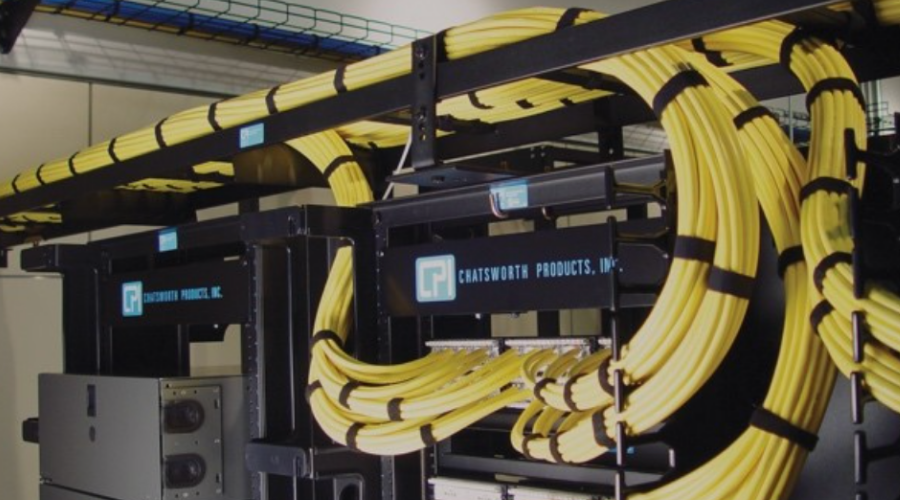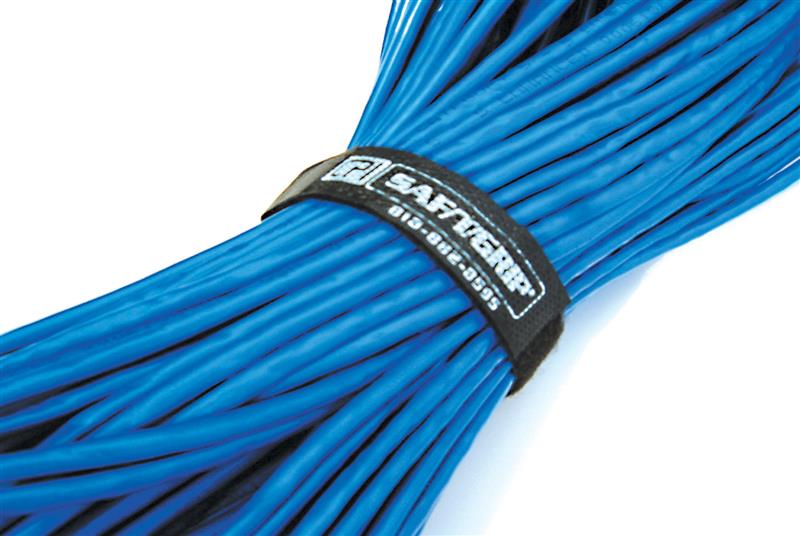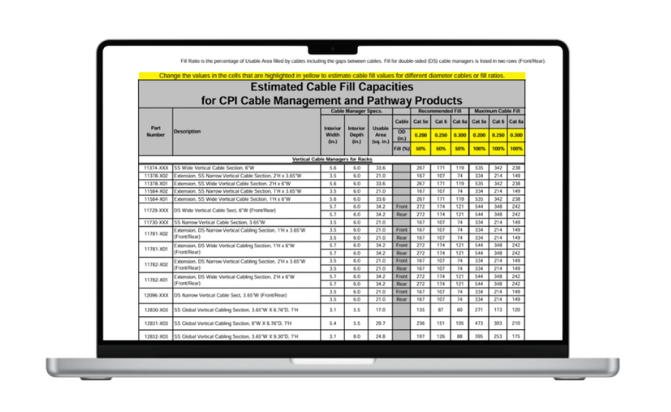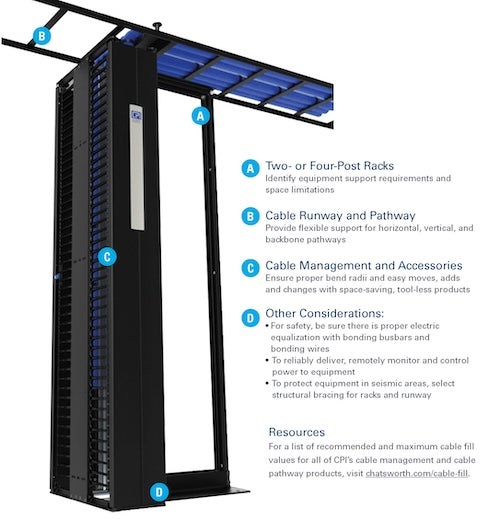
Cable clutter in a server room isn’t just an eyesore— it's a potential threat to network reliability. In edge computing environments, where space is at a premium, effective cable management is crucial for business operations.
This guide shares expert cable management tips to help you optimize your server room:
1. Start with a Plan
Whether you're planning a new IT room or restoring order to an existing one, start with a solid plan. Assessing your current setup and anticipating future needs will save you time and headaches down the road.
- Assess your existing cable layout: Identify the types of cables and understand how they’re routed.
- Create a layout map: Mark equipment, racks, and cable runs to identify efficient pathways.
- Designate clear routes: Seperate power and data cables to minimize interference.
- Plan for future growth: Leave space in cable pathways and racks to ensure your system remains organized as your network expands.
By investing time upfront, you ensure a scalable, organized system that will save you time as your network grows.
2. Optimize Space with a Cable Manager
Although it might seem like a cable manager would take up valuable space in a compact IT room, it does the opposite. Cable managers are designed to save room by organizing and routing cables more efficiently.
Cable managers come with a variety of accessories to help organize your cables. These include T-shaped cable guides, or "fingers," which support the weight of cables and prevent sharp bends. Cable lashing bar kits are used to anchor premise cables closer to their mid-sections, thereby increasing capacity. Additionally, there are other cable management accessories designed to effectively route patch cords.
There are two main types of cable managers:
- Horizontal Cable Managers: These run across the width of a rack, typically occupying 1U or 2U of rack space. They're ideal for organizing patch cables between network switches and patch panels. CPI's is an excellent example, featuring a snap-on front door that opens up or down, and is available in four heights: 1U, 2U, 3U, 4U.
- Vertical Cable Managers: These run along the sides of a rack or cabinet, providing a pathway for cables to travel between different rack units. They're particularly useful for managing longer cable runs and for transitioning cables from horizontal managers to equipment at various heights within the rack. Vertical managers are available in Single-Sided, Double-Sided options. CPI’s is a dependable solution for managing high-density copper cabling on open rack systems.
For optimal cable organization, c
Consider using both horizontal and vertical cable managers
in your setup. That way, as your network grows, you have pre-defined paths in both directions. This approach distributes the weight and strain more evenly, potentially extending cable life.
 |  |
3. Structured Cabling vs. The "Just Make It Work" Approach
Consider two different telecom rooms:
- Scenario One: You face a tangle of unlabeled cables, where finding the right one takes hours and risks disrupting essential services.
- Scenario Two: Every cable is neatly labeled and organized, allowing you to locate what you need in just a few minutes. The first scenario is the result of unstructured, ad-hoc cabling. The second, is what you get with structured cabling.
Structured cabling is a methodical approach to cable management that follows specific industry standards, such as TIA/EIA-568, which provide guidelines not only for the physical layout of cables but also for the logical organization within a telecom room.
Benefits You'll See Immediately:
- Time Savings: No more treasure hunts for the right cable. Everything is where it should be, clearly labeled.
- Fewer Mistakes: With clear organization, you're less likely to disconnect the wrong cable or plug into the wrong port.
- Easier Upgrades: Adding new equipment or replacing old? A structured system makes this a breeze.
- Scalability: As your needs grow, your cabling system grows with you – logically and efficiently.
Remember, structured cabling isn't just about neatness—it's about following a proven framework that reduces errors and simplifies future expansions or changes.
4. Use Cable Management Accessories
might seem like optional “nice to haves,” but these tools play a critical role in the health, safety, and efficiency of your IT room.
- Ensure safety, organization and airflow with cable trays and runways: Elevating and organizing cables with trays and ladders keep cables off the floor, prevent tangling, reduce clutter, and make the room safer and easier to navigate. This helps maintain proper airflow around your equipment, crucial for cooling and extending equipment lifespan.
CPI's Universal Cable Runway or provide flexible point-to-point solutions anywhere cables enter or exit the cable pathway.

- Secure and Flexible Bundling with : Group related cables together for easier tracing and identification during maintenance or troubleshooting. This saves time and reduces errors.

5. Manage Cable Density with CPI’s Cable Fill Table
Managing cable density is essential for avoiding overfilled cable trays or racks that can lead to cable damage and signal interference.
That’s where CPI’s comes in—a practical tool that helps you calculate the optimal fill capacity for your cable trays and racks. This user-friendly spreadsheet quickly provides the numbers you need, allowing you to estimate cable fill values based on your specific cable types and specifications. It then offers recommended and maximum fill values for all of CPI’s cable management and pathway products, guiding you to choose the right solutions for your setup.
This is especially helpful if you're dealing with different types of cables and need to ensure that your infrastructure isn’t overloaded.

6. Ensure Proper Ventilation
Proper cable management keeps ventilation paths clear and prevents overcrowded cables from obstructing airflow, which can lead to damaged equipment, system failures, and increased repair costs.
Tips for Maintaining Proper Ventilation:
- Avoid Overcrowding: Arrange cables to allow air circulation, preventing hot spots and reducing the risk of equipment failure.
- Use Blanking Panels: Fill empty spaces in your racks to direct cool air over equipment, rather than bypassing empty areas. This helps prevent hot spots and maintains an even temperature throughout your IT room.
- Seal Cable Openings: Use grommets or other sealing methods around cable openings in racks and raised floors to prevent hot and cold air from mixing, improving HVAC efficiency.

Simplify with an Integrated Solution
At Chatsworth Products (CPI), we offer a complete system of racks, cable management, and pathway products designed to meet the demands of today’s fast-paced, data-driven world.
. Whether you need cable trays, vertical and horizontal managers, or any other cable management accessories, we have the products that will help you create a clean, efficient, and reliable IT environment.
